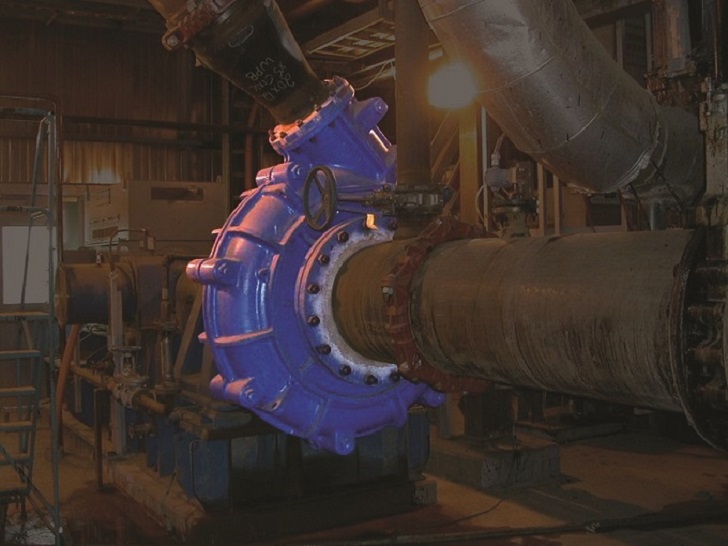Froth pumping remains one of the most complex engineering challenges in mineral processing. Here, Weir Minerals offers advice for dealing with the key challenges in this operation, how to maximise pump availability and minimise maintenance in operators’ flotation circuits.
To counteract declining ore grades, more and more mine operators are investing in techniques to increase the minerals reclaimed from froth pumping. However, when these techniques are deployed without making allowances for the design of the mine’s froth pumping equipment, it can result in the loss of valuable minerals and profits.
Froth pumping remains one of the most complex engineering challenges in mineral processing. This is largely due to the fact that air management issues in the hopper, sump and pump itself can sometimes lead to inefficient pumping, increased maintenance and even lost product.
“We’ve started to notice a pattern among our customers who are having trouble with their froth pumps,” said Les Harvey, regional product manager for Slurry Pumps at Weir Minerals. “By using more flocculants and other chemicals designed to improve mineral recovery, they’re exacerbating existing problems in circuit design and reducing the returns they’re looking for.”
Close examination of the froth’s makeup and physical qualities is often needed to resolve issues. Ensuring operators’ froth handling equipment adheres to best design practices is an important first step in resolving problems.
Maintaining pressure The key challenge in froth pumping is dealing with air in the pump itself, as it tends to naturally centrifuge into the impeller’s eye, where it builds up into an “air lock” which impedes the movement of slurry through the pump.
In addition to reducing the pump’s efficiency, the air build-up in the pump will reduce its flow and increase the slurry level in the suction hopper. The increased slurry level may push the pocket of air through the pump, causing surging and excessive vibration which can damage the pump bearings, impeller and shaft. “The best way to manage air in a froth pump is to invest in a froth pump with a continuous air removal system (CARS), which we have in our Warman AHF, MF and LF pumps,” says Harvey.
This system allows air to move from the pump’s impeller eye to an air collection chamber in the back through a vent hole in the impeller. From the chamber, a flow inducer removes the air from the pump through a vent pipe. “It’s also important to position the pump’s discharge pipe at the top of the pump, or at a 45° angle as this will give air trapped at the top of the casing a way to escape the pump.”
Solving problems “A persistent problem we see is when hoppers designed to meet the demands of slurry pumping are used in a froth pumping application. Slurry hoppers require turbulence to prevent the mineral content from settling, while turbulence in a froth pump prevents the air from escaping and leads to blockages,” said Harvey.
Tanks designed for froth pumping promote continuous circular movement, where solids and liquids are sent to the outside of the sump for further transport while air centrifuges into the centre where it can be removed. This ‘whirlpool’ movement can be encouraged by introducing the slurry from the top of the tank at a tangential angle. Conical designs, rather than those with a flat or rounded floor, further improve the flow of minerals and froth into the pump.
Smooth sailing To prevent blockages, the intake pipe which links the tank to the pump should have a large diameter and slope downwards towards the pump. This design allows escaped air to separate and travel back up the pipe where it can escape from the sump, rather than building up into blockages.
“The shorter your intake pipe, the harder it is for blockages to build up. However, in addition to a maintenance spool and isolation valve, it’s a good idea to leave enough space for a water injection port, which is useful for flushing out any solids build up,” said Harvey.
“To make maintenance easier, a dump valve can be included on the suction side of the pump, between the pump and the isolation valve. This will allow users to drain slurry from the pump and the discharge pipe system when stopping the pump for maintenance.”
Tenacious froths Froths are often classified as either brittle, with large air bubbles that break easily, or tenacious, where air forms tight bubbles around minerals and is difficult to separate. Froth being more tenacious than was accounted for is a frequent cause of blockages as air cannot effectively be removed.
“Two things are happening in the market today. On one hand, mine operators are grinding the product much finer than before to liberate more from the waste rock. They’re also using flocculants that produce much smaller bubbles which lock up the air a lot more than brittle froths,” said Harvey. “We’re working together with customers to find ways to manage these more tenacious froths, by looking at their circuit design and dealing with areas where the air could accumulate and block the system, paying particular attention to their pumps, pipes and sumps.


